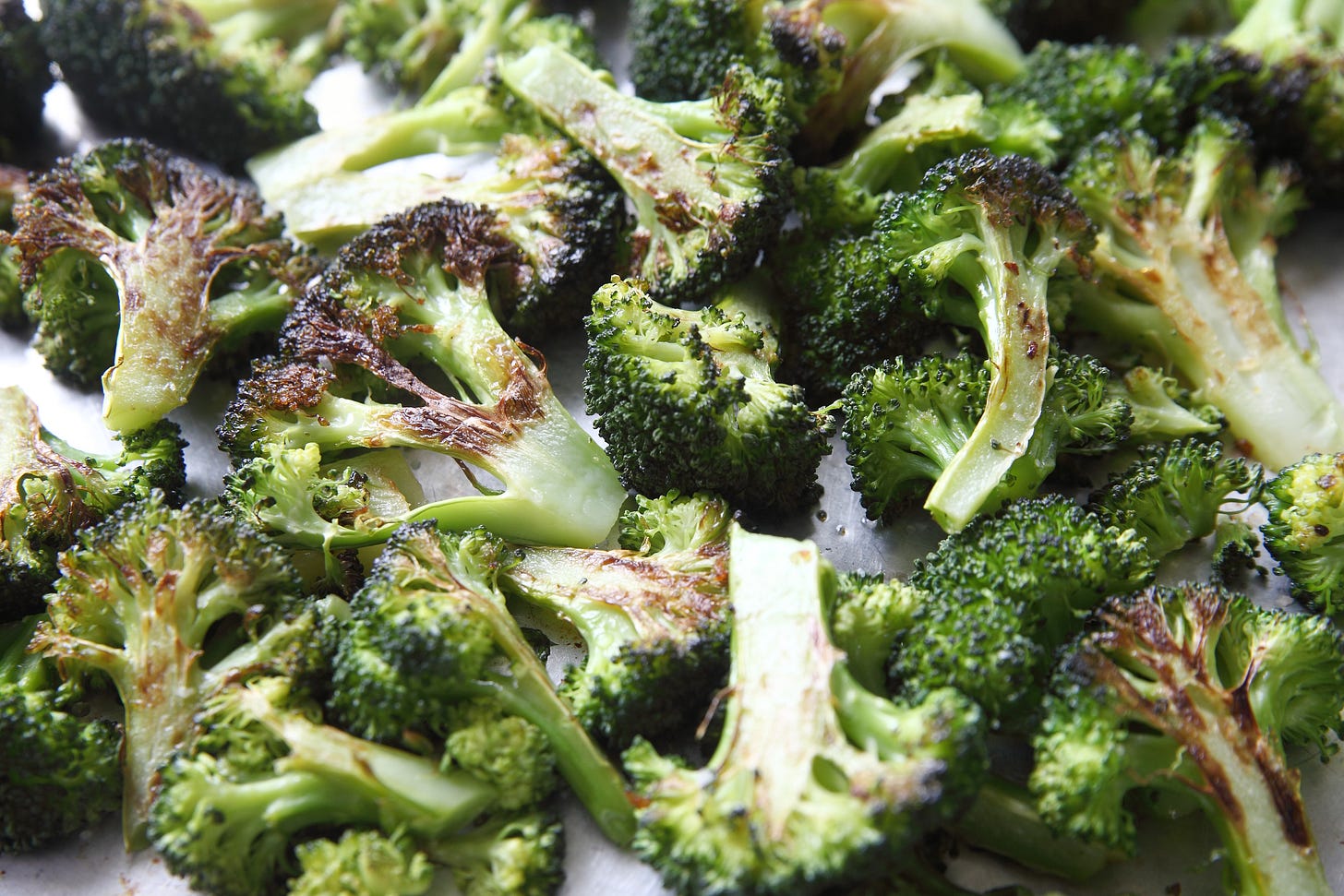Why Repeated Exposure Isn’t Enough
Guiding your child from “no” to curiosity at the table
If this face feels familiar, you’re not alone
Every parent knows the look. That mix of determination and resistance when a child decides they are not going to eat what’s on the plate. At our house, one evening after a playdate, our son’s friend joined us for dinner. I served kale salad alongside the meal; bright with lemon and with a light crunch. He looked at it, paused, and shook his head.
“I don’t really like salads,” he said.
I smiled and asked, “Do you like lemon?” He nodded.
“Well, our kale salad is full of lemon. Would you be okay taking just a very small taste? Not to eat it, just to decide if you want to.”
He agreed, a little unsure but curious. To his own surprise, after that tiny taste, he said yes. Then he went back for more. By the end of dinner, the boy who “didn’t like salads” had eaten two helpings of kale.
Why This Story Matters
You’ve probably been told, maybe even by your pediatrician, that your child must be exposed to a food 12 to 15 times before they’ll accept it. Just keep putting it on the plate, the advice goes. Eventually they’ll come around. It is advice that sounds simple enough. But if repetition alone were the answer, why do so many families still feel stuck in the same frustrating loop? Offer. Refusal. Offer again. Another refusal. Rejection builds at the table, and eventually, you give up.
Exposure is passive. Taste learning is active.
Exposure by itself asks your child to sit in front of a plate and somehow, on their own, make the leap from an unfamiliar food to an accepted food. That is like handing your child a new book and expecting them to figure it out just by holding it.
Taste learning happens when a parent guides their child to make sense of what they are experiencing – naming flavors, linking a new taste to something familiar, or inviting curiosity without pressure. When you guide your child with a flavor “scaffold”, a small connection that makes the unknown feel less intimidating, the possibility of your child saying “yes” to a new flavor grows. This is why “just keep offering” falls short. Repeated exposure is only the first step in a much bigger journey: the journey toward taste literacy.
From Books to Broccoli
Think about reading. A child doesn’t learn to read simply by being surrounded by books. The shelves can be full, the pages inviting, but words remain a puzzle until someone sits beside them. A guide points out letters, sounds out words, and sparks excitement as those words build into a story. What started as a jumble of letters becomes something they understand. Reading isn’t about being near books; it is about learning to make meaning from them.
Food works the same way. Putting broccoli on a plate 12 to 15 times may build familiarity (yes, that is the green thing that is always put on the side of my plate), but recognition is not the same as readiness. A child has to feel safe enough to take a bite, and confident that they won’t be surprised or overwhelmed by the taste. Without that sense of safety, refusal becomes a child’s default response.
That is why “just keep offering” feels so frustrating. It is like handing your child a book a dozen times and expecting them to read it after staring at the cover. Exposure opens the door, but guidance makes the story come alive. Guidance turns a new food into something more approachable, and eventually, something a child can explore with confidence.
What Actually Builds a Willing Eater
Taste literacy is the ability to notice, name, and navigate flavor. Taste literacy helps children move beyond “yuck” or “yum” into something more: This is nutty, like parmesan. This is zingy, like lemons. This bitterness reminds me of dark chocolate.
Taste literacy doesn’t develop through repetition alone. Taste literacy develops when the focus of a new food shifts from exposure to exploration. From “take one no thank you bite” to “let’s see what this is like”.
That is what happened with the kale salad at our table. The small invitation, linking a familiar flavor (lemon) to an unfamiliar one (kale), invited curiosity. My son’s friend didn’t eat two servings to be polite. He discovered something new for himself; a flavor story that made sense in his brain.
The Science Beneath the Story
Here is what happens, behind the scenes, when your child tastes a new flavor. Every taste builds a neuro-flavor map; a GPS for flavor in the brain. At first, the route feels uncertain. But with repetition paired with guidance, connections form: this green leaf tastes citrusy, like that lemon I liked last week.
Without guidance, that map stays blank. Foods on the side of your child’s plate become familiar by sight, but not meaningful in taste.
There is another layer to building confidence with food: gustatory priming. When a child smells food before tasting it, their nervous system receives a preview. When they taste something familiar just before something new, the brain is primed to handle the contrast. That is why the kale salad worked for my son’s friend. Lemon acted as a primer. The lemon “primer” helped shift resistance of “salad” into a welcome signal. Gustatory priming is natural developmental science meeting the dinner table.
Shifting From Performance to Participation
Imagine the nightly broccoli struggle. You put florets on the plate for the tenth time. Your child ignores them or pushes them aside, and frustration sets in.
Now picture the same moment differently. Instead of broccoli as a hopeful test, will they or won’t they eat it, you offer broccoli as an experiment. Smell it raw, then roasted. Notice how the florets look like tiny trees. Dip the stem in hummus and compare its bitterness to radish.
Your child may not clear their plate. But something shifts. They lean in a little: sniffing, poking, maybe even licking or nibbling. In that moment, their brain begins to connect dots; this smell reminds me of nuts, this texture feels bumpy, this taste is like something I’ve tried before. That small act of noticing is the beginning of confidence.
Each of these moments begins to draw your child’s neuro-flavor map; the brain’s internal guide to flavor. Instead of a blank page, their brain now has its first landmark to reference next time. Even if the broccoli isn’t eaten, your child builds trust. Trust that tasting won’t overwhelm them, and confidence that they can come back and try again. This is flavor scaffolding. Flavor scaffolding is offering just enough structure to explore a food without pressure, then gently building on that comfort, taste by taste.
Repetition, Reset
So, should you stop repeating exposure to foods? No, repetition matters. But repetition works best when paired with scaffolding and purpose.
Inside the Fussy to Foodie™ Collective, I guide parents through a repetition reset. It is not about counting exposures or hoping your child will take another bite. Repetition reset is about guiding your child’s neuro-flavor map through taste literacy. Taste literacy layers meaning on top of repetition, so every “no” becomes a chance to notice, and every “maybe” builds your child’s trust.
The reset is simple in spirit. Here are three ways to start:
Introduce words that describe flavor.
Change one small element of a food to show how it shifts.
Ask questions that invite curiosity.
Over time, those small shifts turn mealtime from a cycle of refusals into a pattern of exploration.
A Note for You
You don’t need to be a chef, memorize scripts or track every bite. The most important role is already yours: you are your child’s guide.
Think again about reading. You would not hand a child a book and hope they figure it out on their own. You would sit beside them, point to letters, sound out words, and celebrate as the story takes shape. Each layer of your support makes the next step feel more possible.
Food works the same way. Repeated exposure is only step one. When a new flavor shows up on a plate without context, it feels intimidating. Your child may wonder: Will this taste too strong? What will the texture feel like? Will I like it?
Scaffolding helps shrink that uncertainty. A small bridge, linking a new flavor or offering a safe way to explore, makes the unfamiliar feel less risky. And then something shifts. Instead of automatic refusal, your child leans in with curiosity. Curiosity builds comfort. Comfort grows into confidence.
Confidence helps your child trust the food in front of them and, even more importantly, trust themselves as a capable eater, ready to handle new experiences.
This is the heart of taste literacy. When scaffolding, neuro-flavor mapping, and gustatory priming are in play, mealtimes move from frustration toward something steadier: confidence, calm, and joy. So, the next time you hear “just keep offering,” pause and remember: your child does not need more exposures stacked on a plate. What makes the difference is you – guiding your child through the story of flavor, one step at a time.
What Comes Next
Inside the Fussy to Foodie™ Collective, this guidance comes to life each week through our Flavor Pathways. Each one is built around a single ingredient, chosen with care for how it supports taste, development, and confidence at the table.
Instead of simply saying “offer this food again,” we guide you and your child as you explore the week’s flavor in six developmentally aligned ways. These are not recipes or rigid scripts. They are simple, flexible invitations that grow with your child, whether they are just beginning to explore flavors or are ready for more adventurous tasting.
Each Flavor Pathway guides you to:
Begin with what your child already knows and link it to something new.
Notice sensory details – smell, texture, and taste – that make food less mysterious.
Create small moments of exploration that build into confidence over time.
Week by week, these Flavor Pathways add up to more than a list of “accepted” foods. You are guiding your child’s taste literacy; a lifelong skill that helps them feel calm around food, curious to try, and confident in their own choices at the table.
Next week, we’ll begin with leek
Why leek? Leek is a gentle yet layered flavor. Many children only know onion, which can be sharp and off-putting. Leek, by contrast, offers a softer entry point. Its base sweetens as it cooks, while its green tops carry subtle earthy notes. Exploring leek shows families how one ingredient can open the door to flexibility, helping children realize food isn’t fixed, it can surprise them in delicious ways. For a child, that lesson builds resilience: food is not something to accept or reject, it is a story with many chapters.
Inside the Collective, we’ll guide you through why leek matters for taste literacy, how it connects to flavors your child already trusts, and six approachable ways to explore it together.
Join Us at the Table
If feeding your child feels heavier than you expected, you are not alone. Every parent reaches a point where the advice to “just keep offering” begins to feel empty.
What makes the difference is guiding your child with a thoughtful approach that turns mealtime from refusals into discovery. Over time, that guidance builds confidence, one flavor at a time.
Inside the Fussy to Foodie™ Collective, each week’s Flavor Pathway offers a simple, developmentally aligned way to help your child grow calm, curious, and confident at the table.
Join our community inside the Collective. Your seat is waiting



